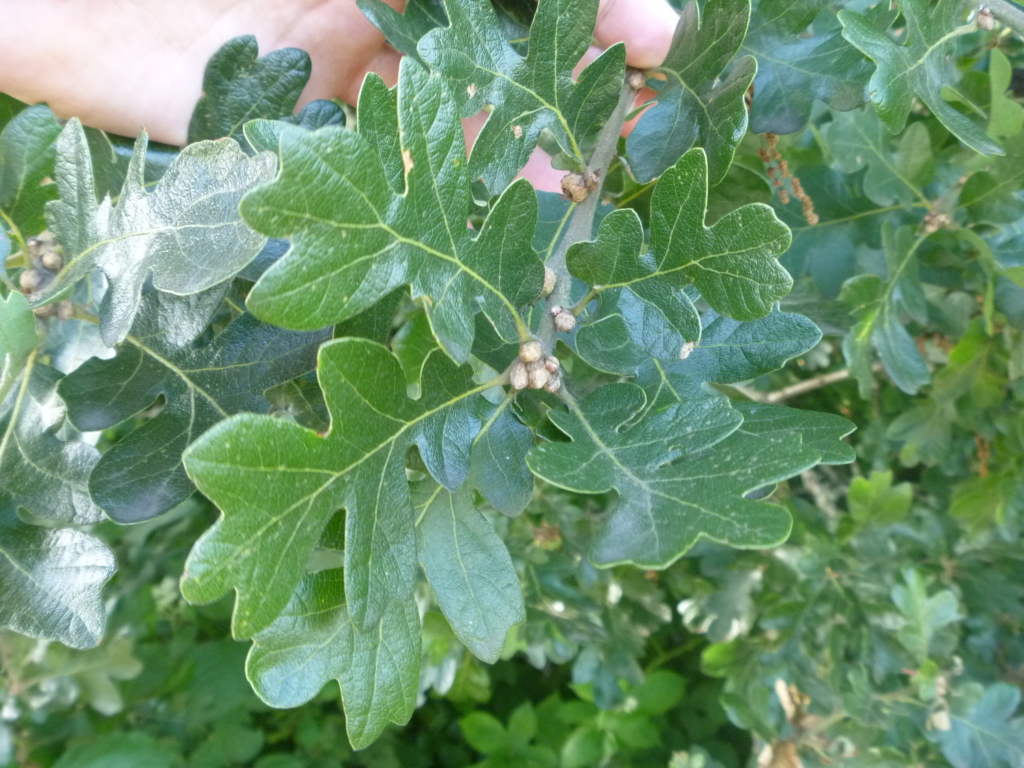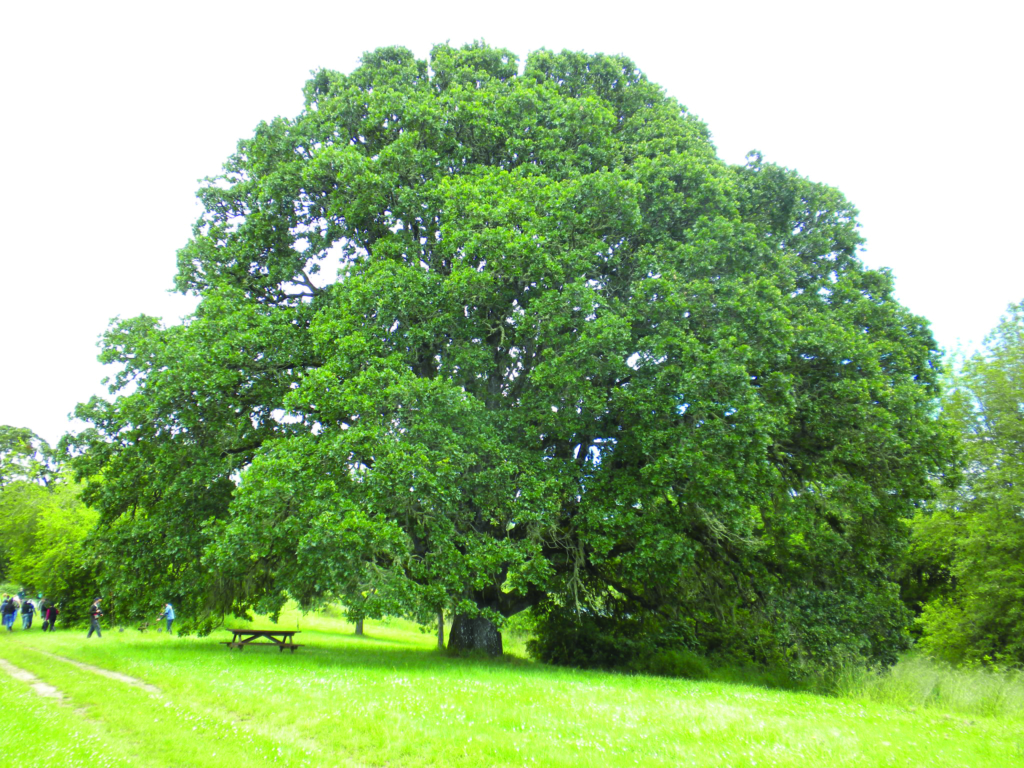Oregon White Oak
Quercus garryana
Plant Description
Oregon white oak is a deciduous tree native to the Pacific Northwest, often found in dry open forests, savannas, and grassland-forest ecotones, though it can also grow in wet areas and along streams. It typically grows 40–80 feet tall, with a broad, spreading crown, thick, deeply furrowed bark, and lobed, leathery leaves that turn yellow-brown in autumn. In spring, it produces small flowers and acorns that mature by fall, providing food for birds, mammals, and insects. Ecologically, Oregon white oak is the keystone species of the oak savannah ecosystems which once dominated the Willamette Valley. It is incredibly important for wildlife and supports over 200 species of insects and wildlife. These important ecosystems now cover just 1-2% of their original land area.
Oregon white oak is slow growing, making it an attractive tree for yards and gardens. If allowed to grow for many decades or even centuries, it forms a large canopy with wide-spreading branches and a beautiful, gnarled form. It requires full sun, but is tolerant of both drought and wet winters. The Mediterranean Oak Borer has recently been discovered in Oregon and may impact Oregon white oak populations, but the impact of these insect is still being studied.
Plant Details
| Life Forms | |
|---|---|
| Habitats | |
| Soil and Moisture Conditions | |
| Special Uses | |
| Shade Preference | |
| Mature Height | 100’ |


